we will explore the various components of a solar system, their functions, and how they work together to produce clean, renewable energy. We will also answer common questions about solar panels, inverter, battery types, and system sizing. So let’s dive in and learn more about the fascinating world of solar energy.
Solar System Components
Solar energy has become increasingly popular as an eco-friendly and cost-effective alternative to traditional energy sources. A typical solar energy system consists of several components that work together to generate, store, and manage electricity. In this article, we’ll take a closer look at these components, their functions, and how they work together to create a complete solar energy solution.
Solar Panels
The heart of a solar energy system is the solar panels, which are responsible for converting sunlight into electricity.

There are three main types of solar panels available in the market:
Monocrystalline
These panels are made from a single crystal structure, resulting in higher efficiency and a sleek, uniform appearance. They are more expensive but provide better performance in low-light conditions.
Polycrystalline
Polycrystalline panels are made from multiple crystal structures, resulting in slightly lower efficiency and a blueish hue. They are more affordable and have a lower environmental impact during production.
Thin-Film
Manufacturers create thin-film panels by applying a slim layer of photovoltaic material onto a substrate. These panels offer flexibility, light weight, and lower efficiency compared to crystalline panels, yet they work well in a variety of applications, such as building-integrated photovoltaics (BIPV).
Mounting System
The mounting system is essential for properly installing solar panels and ensuring their stability and optimal performance.
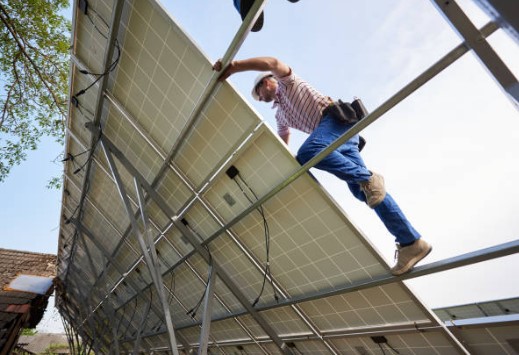
Types of Mounting Systems
There are three main types of mounting systems:
Ground-Mounted
These systems are installed on the ground and can be customized for optimal angle and orientation. They are suitable for properties with ample space and require proper foundation and support structures.
Roof-Mounted
Roof-mounted systems are the most common type, as they utilize existing structures and save space. They require careful assessment of the roof’s condition and load-bearing capacity.
Pole-Mounted
Pole-mounted systems are installed on single or multiple poles, providing adjustable height and orientation. They are ideal for remote locations and areas with limited space.
Solar Inverter
The solar inverter is responsible for converting the direct current (DC) generated by solar panels into alternating current (AC) that can be used in homes and businesses.
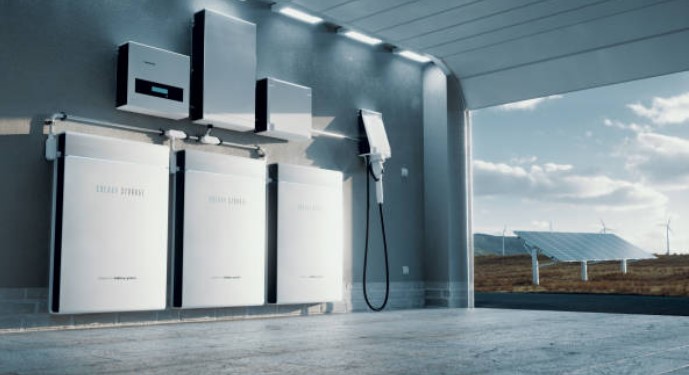
Types of Solar Inverters
There are three main types of solar inverters:
String Inverters
These inverters connect multiple solar panels in a series, converting the combined DC output into AC. They are affordable and straightforward but can suffer from reduced efficiency if one panel underperforms.
Microinverters
Microinverters are installed on each solar panel, converting DC to AC individually. This setup allows for better performance monitoring and reduces efficiency loss caused by underperforming panels. However, they are more expensive than string inverters.
Power Optimizers
Power optimizers combine the advantages of both string inverters and microinverters. They are installed on each panel and optimize DC output before sending it to a central inverter for AC conversion. This setup ensures maximum efficiency and performance monitoring.
Solar Charge Controller
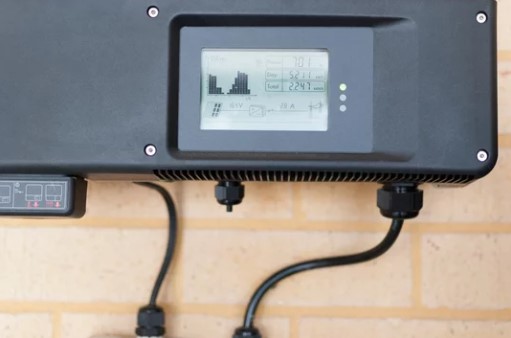
A solar charge controller regulates the voltage and current from solar panels to the battery storage system. It protects the batteries from overcharging and ensures efficient charging.
MPPT vs. PWM
There are two main types of solar charge controllers: Maximum Power Point Tracking (MPPT) and Pulse Width Modulation (PWM). MPPT controllers are more efficient and adjust to varying sunlight conditions, while PWM controllers are more affordable but less efficient.
Battery Storage
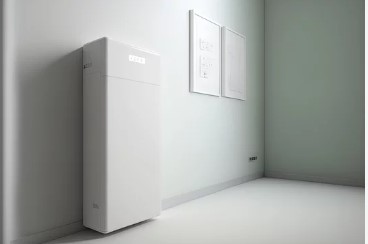
Battery storage is essential for off-grid solar systems and grid-tied systems with backup power needs. It stores excess solar energy during the day to be used during the night or when solar production is low.
Battery Types
There are two main types of batteries used in solar systems:
Lead-Acid
Lead-acid batteries are the traditional choice, offering a lower upfront cost but shorter lifespan and lower energy density compared to lithium-ion batteries.
Lithium-Ion
Lithium-ion batteries are becoming increasingly popular due to their higher energy density, longer lifespan, and lower environmental impact. However, they come with a higher upfront cost.
Disconnect Switches

Disconnect switches provide a way to safely disconnect the solar energy system from the grid or other components for maintenance or emergencies.
AC and DC Disconnects
There are two types of disconnect switches: AC disconnects, which disconnect the solar inverter from the grid, and DC disconnects, which disconnect the solar panels from the inverter.
Wiring and Connectors
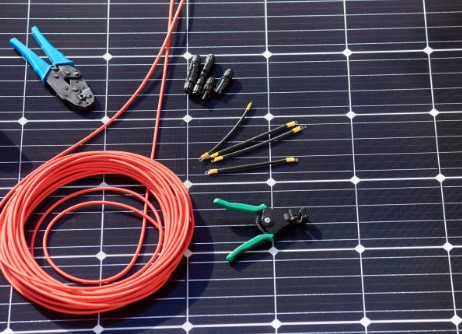
Proper wiring and connectors ensure efficient and safe energy transfer within the solar energy system.
Important Components
High-quality, UV-resistant cables, connectors, and junction boxes are crucial for a long-lasting and reliable solar installation.
Energy Meter
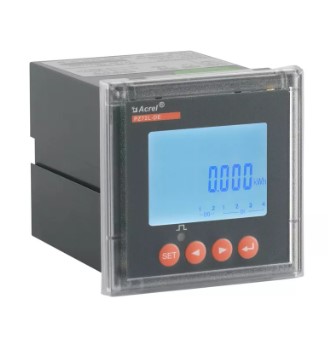
An energy meter is used to measure the energy production of the solar system and the energy consumption of the property. It is essential for calculating net metering credits or accurately tracking energy usage.
Net Metering
Net metering allows solar system owners to send excess solar energy back to the grid, earning credits that offset energy costs during periods of low solar production.
Monitoring System
A monitoring system tracks the performance of the solar energy system, providing valuable insights into energy production, consumption, and potential issues.
Performance Monitoring
Real-time monitoring allows system owners to optimize their energy usage and ensure the solar system is performing at its best.
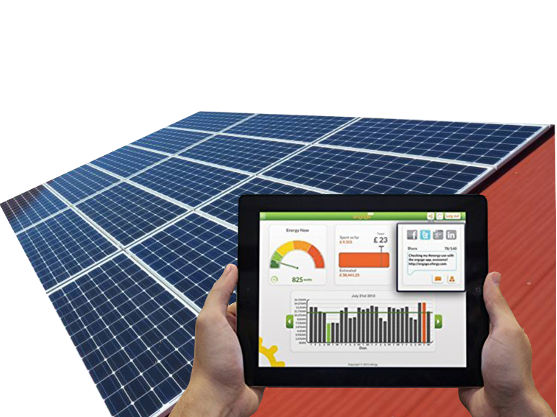
Solar Panel Ventilation
Proper ventilation is crucial for solar panels, as excessive heat can reduce their efficiency and overall performance. To ensure adequate ventilation, solar panels should be installed with a gap of at least a few inches between the panels and the roof surface. This allows air to circulate and helps keep the panels cool.
Distance between Solar Panels and Batteries
The distance between solar panels and batteries can affect the efficiency of your solar system. Longer distances may require larger wire sizes to minimize energy losses due to resistance. It’s essential to consult with a solar professional to determine the optimal distance and wire size for your specific installation.
Best Battery Type for Solar Systems
There are several types of batteries suitable for solar systems, but the most common are lithium-ion and lead-acid batteries. Lithium-ion batteries have a longer lifespan, higher energy density, and better efficiency compared to lead-acid batteries. However, they are also more expensive. The choice between these two battery types depends on your budget and specific energy needs.
Sizing a Solar System
Understanding the size of a solar system is essential when planning your installation. Here, we will discuss the size of two common solar system capacities: 5000 watts and 1 kW.

5000 Watt Solar System
A 5000-watt solar system, also known as a 5 kW system, can generate around 20-25 kWh of electricity per day, depending on your location and the amount of sunlight received. A 5 kW solar system typically consists of 15-20 solar panels, depending on the individual panel’s wattage. This size of a system is suitable for medium to large homes with moderate energy consumption. It can offset a significant portion of your electricity bill and reduce your carbon footprint.
1kW Solar Panel
A 1 kW solar system generates around 4-5 kWh of electricity per day, depending on your location and the amount of sunlight received. This system size usually consists of 3-4 solar panels, again depending on the wattage of each panel. A 1 kW solar system is ideal for smaller homes or as a supplemental energy source for homes with lower energy consumption. It can help offset some of your electricity costs and contribute to a greener environment.
Conclusion
Solar energy systems are made up of several key components, including solar panels, inverters, a mounting system, and batteries. Proper ventilation and appropriate sizing are crucial for maximizing the efficiency and performance of your solar installation. By understanding the various components and their functions, you can make informed decisions when planning your solar system installation.
Frequently Asked Questions
What is the difference between monocrystalline and polycrystalline solar panels?
A single crystal structure forms monocrystalline panels, which leads to higher efficiency and a sleek appearance. Meanwhile, multiple crystal structures make up polycrystalline panels, resulting in slightly lower efficiency and a blueish hue.
How do I choose the right solar inverter for my system?
The choice of a solar inverter depends on your system size, budget, and performance requirements. String inverters are more affordable, microinverters provide better performance monitoring, and power optimizers combine the benefits of both.
What is the purpose of a solar charge controller?
A solar charge controller regulates the voltage and current from the solar panels to the battery storage system. It protects the batteries from overcharging and ensures efficient charging.
Should I choose lead-acid or lithium-ion batteries for my solar energy system?
Lead-acid batteries are more affordable but have a shorter lifespan and lower energy density. Lithium-ion batteries are more expensive but offer a longer lifespan, higher energy density, and lower environmental impact.
Why is a monitoring system important for a solar energy system?
A monitoring system tracks the performance of the solar energy system, providing valuable insights into energy production, consumption, and potential issues. It allows system owners to optimize their energy usage and ensure the solar system is performing at its best.
What is included in a solar panel installation?
A solar panel installation typically includes solar panels, an inverter, a mounting system, and batteries (for energy storage). Additional components, such as wiring, connectors, and monitoring systems, may also be part of the installation.
Do solar panels need ventilation?
Yes, solar panels need proper ventilation to prevent overheating, which can reduce their efficiency and performance. A gap of at least a few inches between the panels and the roof surface is necessary for adequate airflow and cooling.
How far can my solar panels be from the battery?
The optimal distance between solar panels and batteries depends on your specific installation and site conditions. A solar professional can help determine the ideal distance and wire size to minimize energy losses due to resistance.
What type of battery is best for solar?
The most common battery types for solar systems are lithium-ion and lead-acid batteries. Lithium-ion batteries generally have a longer lifespan, higher energy density, and better efficiency but are more expensive than lead-acid batteries. The choice between the two depends on your budget and energy needs.
How big is a 5000 watt solar system and a 1 kW solar system?
A 5000 watt (5 kW) solar system can generate around 20-25 kWh of electricity per day and typically consists of 15-20 solar panels. This size is suitable for medium to large homes with moderate energy consumption. A 1 kW solar system generates around 4-5 kWh of electricity per day and usually consists of 3-4 solar panels. It is ideal for smaller homes or as a supplemental energy source for homes with lower energy consumption.